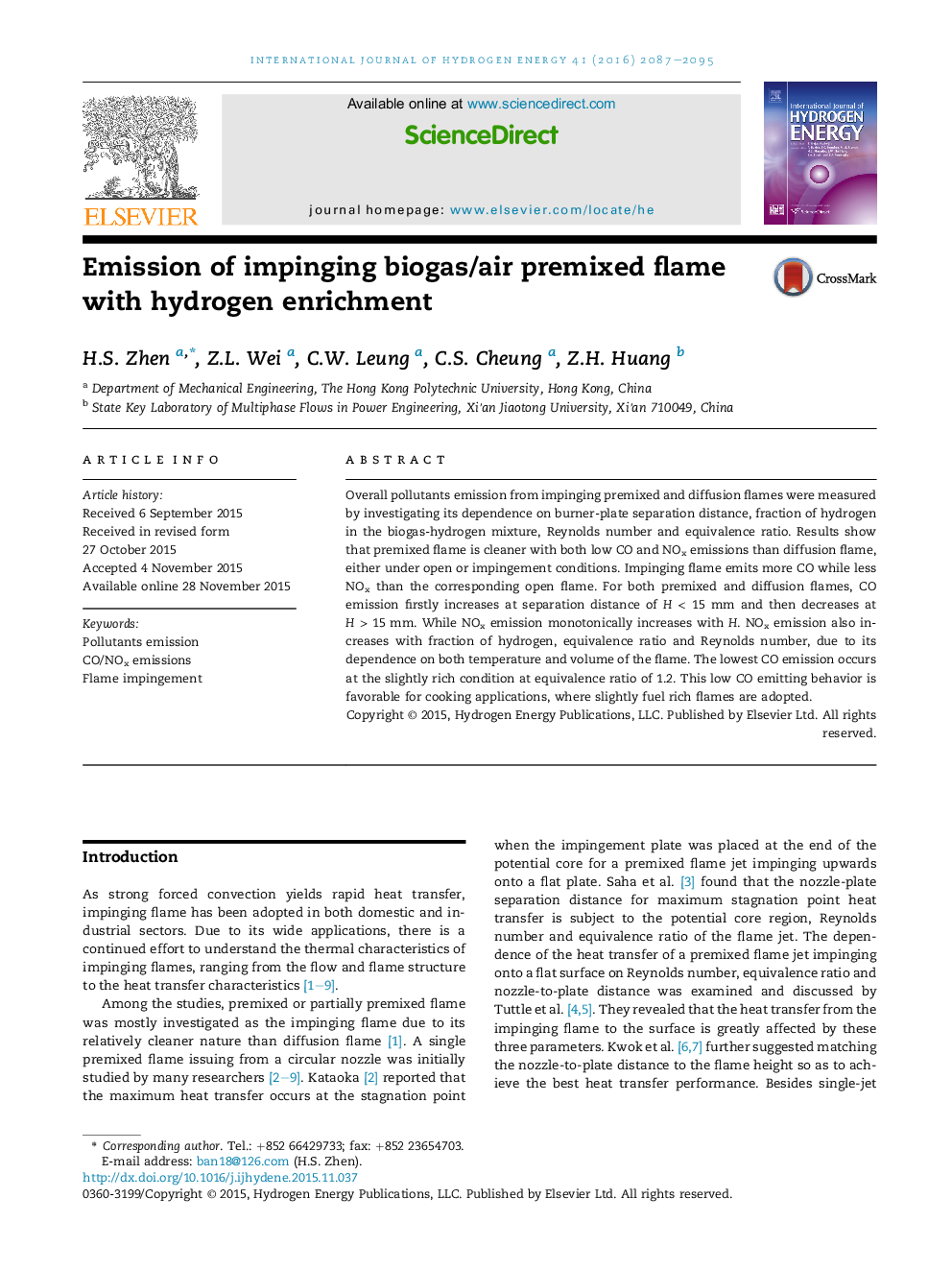| Article ID | Journal | Published Year | Pages | File Type |
|---|---|---|---|---|
| 7712616 | International Journal of Hydrogen Energy | 2016 | 9 Pages |
Abstract
Overall pollutants emission from impinging premixed and diffusion flames were measured by investigating its dependence on burner-plate separation distance, fraction of hydrogen in the biogas-hydrogen mixture, Reynolds number and equivalence ratio. Results show that premixed flame is cleaner with both low CO and NOx emissions than diffusion flame, either under open or impingement conditions. Impinging flame emits more CO while less NOx than the corresponding open flame. For both premixed and diffusion flames, CO emission firstly increases at separation distance of HÂ <Â 15Â mm and then decreases at HÂ >Â 15Â mm. While NOx emission monotonically increases with H. NOx emission also increases with fraction of hydrogen, equivalence ratio and Reynolds number, due to its dependence on both temperature and volume of the flame. The lowest CO emission occurs at the slightly rich condition at equivalence ratio of 1.2. This low CO emitting behavior is favorable for cooking applications, where slightly fuel rich flames are adopted.
Keywords
Related Topics
Physical Sciences and Engineering
Chemistry
Electrochemistry
Authors
H.S. Zhen, Z.L. Wei, C.W. Leung, C.S. Cheung, Z.H. Huang,
